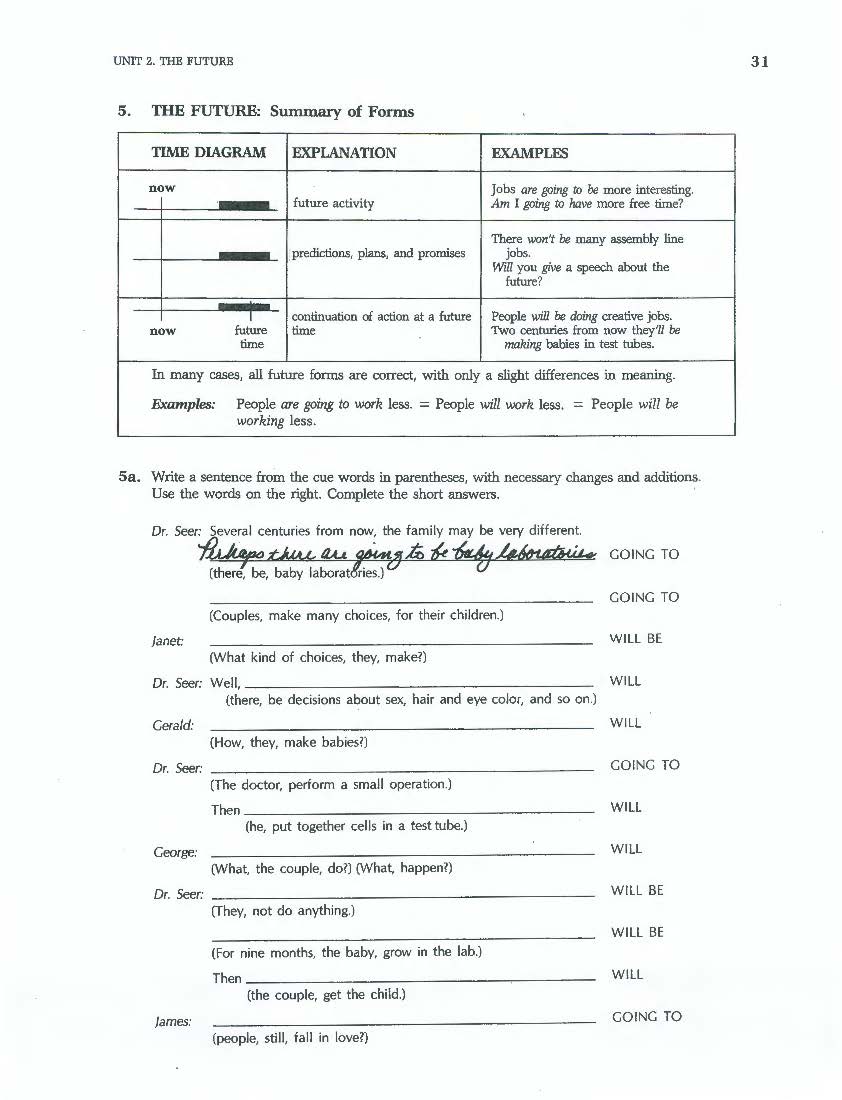1
/
of
4
Work/Life English
D-07.09 Predict the Future of the World with 5 Kinds of Verb Phrasing
D-07.09 Predict the Future of the World with 5 Kinds of Verb Phrasing
Regular price
$3.00 USD
Regular price
Sale price
$3.00 USD
Unit price
/
per
Unit 2 (The Simple Tenses: The Future—“Work in the Future”) of the Original Scenario, Volume Two: English Grammar in Context, pages 26-38
13 pages
Who It’s For: (Teachers & Helpers of) Advancing Students of English Who Want More Ways of Expressing Ideas about Future Events or Activity in Conjunction with One Another.
Why It’s Useful: In pages that need updating but are still useful, here’s another review of ways to “Apply Grammar.” At various levels of difficulty, Unit 2 of the original Scenario Volume Two purports to present and practice—and assess mastery of—five (5) varieties of phrasing used to forecast future events or trends. These are: [1] am / is / are (n’t) going to + Verb, [2] will / won’t + Verb, [3] will / won’t + be + Verb-ing (the “Future Continuous”), [4] Verb(s) or am / is / are (n’t) Verb-ing (the “Simple or Continuous Present for Future Meaning”), and [5] am / is / are (n’t) about to Verb (for the “Very Near Future”). The only option missing is “Future in the Past” (was / were (n’t) going to / about to + Verb), which might also be comforting at a time where “novel” or “new” is not necessarily to be sought after.
What You’ll Do:
[1] The page 26 Scenario: “Work in the Future” is composed of statements and questions printed on “Society-of-Future-Studies Speech Note Cards.” Exercises 1a-1c ensure comprehension of the sentence patterns. Since much time has passed since these “predictions” were made, text users might want to update some of them.
[2] Then come boxed explanations entitled The Future: Going to; The Future: Will; the Future Continuous; Summary of Forms; Expressions of Future Time; and so on. Each section of pedagogy is followed by “controlled to expressive reinforcement exercises.” As usual, at intervals these culminate in multi-leveled “Talking It Over,” “Writing It Down,” and/or “Putting It Together” activities. Look forward to the world to come with this always relevant material.
Couldn't load pickup availability








